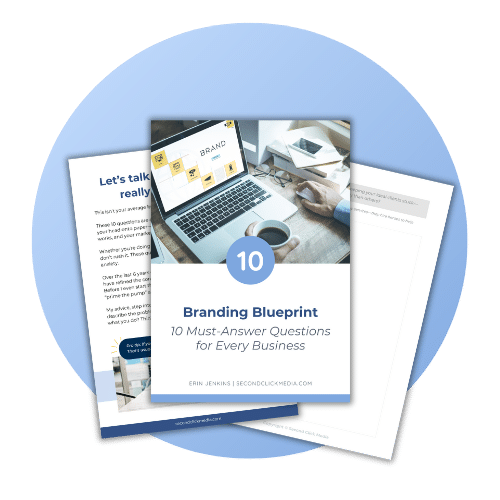A website’s homepage acts as the overall summary of what a visitor will find. Often it is the first chance you get to introduce your brand, business, and services to a website visitor. Therefore it is important that you make a good impression and clearly communicate your message.
Over the past few years of helping business redesign their websites, I have discovered the home page should essentially answer 5 questions people have about any given business or organization. If a visitor’s questions are answered right from the first impression, it will lead to a higher engagement and conversion rate.
In this article, we will go through each question your homepage should answer to help increase your website conversions.
Know Your Audience
Before we can begin answering each question, first consider who is asking them in the first place. Begin by learning as much as possible about your customer base as it can be difficult to target them if you are unaware of how they think and what their needs are.
A great strategy we use with our clients is to build a buyer persona, which includes identifying their pain points and specific needs they have as it relates to your business or services. From there, we use keyword research as a useful tool in writing copy that reaches the right people.
If you want your website to stand out and communicate to the right people, focus on developing a cohesive brand that is customer-oriented.
The Five Questions
The overarching idea for your brand messaging is to tell a story that your customers are interested in reading as it relates to them. Starting with the homepage, your website should be clear about who you are targeting with your products or services, and the reasons why your brand is the best fit for them.
There are a few key points that are tied up in these concepts, so below are five questions your homepage should focus on answering.
1. “What Do You Offer?”
What you offer should be easy to understand while including the benefits your organization or services provide. If you are unable to illustrate the value of your business effectively, there is little you can do to convince a visitor to take that second click or keep browsing your website.
A good rule of thumb is if a person cannot understand what you offer within the first 30 seconds of scanning your homepage, the changes of existing the page greatly increases.
The formula I typically use for hero headings and taglines is:
Large Heading: “A desired feeling of your target audience + benefit your organization brings them”
Tagline: “How your business solves the problem + what outcome you can promise”
Below are some examples of websites that depict this formula:
Agency Mavericks

Clickup Project Management Tool

Business Made Simple with Donald Miller
Pro tip: Mention a few things that are unique about your business. If there is something unique about your product line like your food is only made with organic ingredients or your jewelry is solid gold instead of gold-plated, then lead with this information.

2. “How Do You Help?”
Although the way in which your business can help your customers seems pretty similar to the question above, it acts as a distinct concept. The front page of your website should always put a specific emphasis on expressing the way in which your business (not just its offerings) is the solution to the problem that has been plaguing your audience.
Here is where you can focus on how the features benefit the customer more specifically, such as offering “phenomenal customer service to support your growing needs.” This information is valuable to communicate in short concise sentences, listing why your customers need your products.
It’s your job to tell the customer what you can do for them – keep this focus front and center in your wording.
3. “Why Do You Exist?”
Usually, this section encompasses the “about” summary of your business. Answer the question in this format turns the focus off you and onto how you help your customers. It gives you the opportunity to also showcase how your organization is distinctly different than other businesses and why someone should choose you.
Good branding plays a big role here. Your brand is the story of your business, and it tells who you are and the mission behind what you do. Include the reasons your business was founded, what you’re hoping to accomplish, the good work you’ve already done. All of this information can go a long way in building a loyal base.
4. “Who Do You Help?”
At this point, you’ve thought about how you help them and what they need help with, but it’s also important to think about who it is that you’re helping.
In order to showcase your brand as the answer to their issues, you really need to know who your customers are and what they need. That’s why building a buyer persona is such a crucial step. Practice getting in the headspace of your audience.
Once you have a grasp of who you’re targeting, and the reasons that have led them to your site, you should be able to tailor your web page’s wording and layout to them. Use language that makes them feel seen.
A website visitor should walk away securely in the knowledge that even if there are a dozen other sites selling the same or similar products, only your business cares about them enough to solve their problems.
5. Your Homepage Should answer “What Should The Visitor Do Next?”
As we know, the underlining goal of this exercise is to turn more website visitors to customers. When a new or returning customer engages with the site this way- this is called a conversion.
In order to get the most conversions, every single page on your website needs to be very clear in guiding your customers to complete this action. The homepage is going to likely get the most traffic, therefore this page should have an especially strong call to action.
When designing your site, think of yourself as a shepherd. Herd the visitor along the process of buying or booking. One effective way to communicate the call to action is by including a 3 or 4-step process a visitor can expect once they have taken action. It helps to remove doubt or hesitations they may have while guiding them step by step to the desired end.
Pro tip: An effective way to build your audience is to offer two calls to action on your home page. First is the clear and direct click you want them to make, such as purchase, contact, etc. while offering a passive call to action.
The second offering is one that requires no commitment on their part but allows them to engage, even in a small way with the hopes you can build a relationship over time. One of the most popular forms of a passive call to action is subscribing to a newsletter, following on social media, or leaving comments on a blog post.
The homepage acts as an effective tool in your communication strategy
Since your homepage is intended to appeal to your customers and sell them your brand, it is very important that you keep your audience at the center when redesigning and writing the messaging of your website.
In order to reach your customers, it is important to understand them. From there, it’s just a matter of expressing why you are the best fit. You can earn their business by communicating you care about who they are and what they need.
Next steps
Hopefully, this list will give you a great introduction to connecting with your base and optimizing your website for more conversion. If you need more help, give us a call! Speaking with an expert at Second Click can go a long way in boosting your website’s conversions.
For more information about how to plan an effective website redesign, check out the 7 essential elements we consider when designing a new layout for your website.



